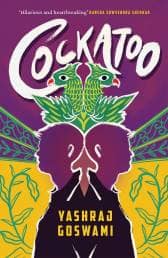



On 6 September 2018, in a landmark judgment the country’s apex court read down parts of an archaic law, Section 377 of the Indian Penal Code. The law not only criminalised queer people, but it also immunised select elements to abuse and harass them. Five years on, the signs of change are evident. But, several reports find, there continues rampant queerphobia at workplaces and acceptance always comes at a personal cost. While there’s increasing representation on one hand, there’s still a need for more visibility, queer-affirmative spaces, and activism to ensure that the judgment is socialised, and its impact is felt across the country. Moneycontrol asked a few professionals about the changes they’ve witnessed pre- and post-377 judgment.
 Kanav N Sahgal, communications manager at Nyaaya and researcher LGBTQIA+.
Kanav N Sahgal, communications manager at Nyaaya and researcher LGBTQIA+.Communications manager at the Indian legal information access organisation Nyaaya and a researcher specialising in issues facing LGBTQIA+ people, Kanav N Sahgal notes the behavioural changes on dating apps. “Before parts of Section 377 were overturned, I noticed that several people on dating apps were discreet. They were more reluctant to open up about their sexuality to their families.”
Further, he finds visible changes in event organisation and themes of the panel discussions related to issues concerning LGBTQIA+ people. “Earlier, events were organised to make people aware of the existence of Section 377 and why it should be repealed. Even I didn’t know about Section 377 before coming to Delhi. Additionally, only a few people in same-sex relationships were openly sharing their stories on social media. There were fewer Bollywood movies creating awareness, so representation was far less compared to post-377 when you see TV series like Made In Heaven, which employs a trans person to play a trans character. Now, almost one Bollywood movie a year is LGBTQIA+ themed.”
While people from across the LGBTQIA+ spectrum are becoming more visible and there are discussions about “what’s next?”, for example, marriage equality or anti-discrimination laws, Sahgal feels that the discourse is limited to the urban landscapes and internet-consuming population only. In that sense, he feels “we still have a long way to go.” What Sahgal would’ve perhaps liked is to see the government delivering on the promise that was enshrined in Navtej and NALSA judgments. “The government should have put posters, published advertisements in newspapers, and mobilised public discourse on LGBT+ rights” to increase awareness and sensitise the public, he says.
 Ruchi Ruuh, relationship counsellor.
Ruchi Ruuh, relationship counsellor.“Queer people definitely didn’t feel that confident in sharing their experiences,” says Ruchi Ruuh, a qualified relationship counsellor working in areas of love, relationships, and mental well-being. “They feared legal consequences — being outed or judged by their therapist (which never happens) or even a therapist trying conversion therapy with them. Ever since the judgement, I feel more therapists as well as queer people have become informed about LGBTQIA+ rights, which has boosted queer and other people’s confidence to start discussions on sexual orientation and gender identity. Also, therapists are now better equipped to deal with queer issues, as they’re armed with new training, guidelines and modalities that are introduced,” she says.
While previously there was major societal stigma and fewer queer-affirmative spaces, which resulted in queer people to remain closeted, it’s welcoming that “now queer people don’t have to take time and copious amounts of trust just to open up about their orientation and issues,” Ruuh says. “There was always a concern for the safety of both clients and therapists. Additionally, since the judgment, so many organisations have been helping queer clients reach and connect with queer-affirmative therapists. In my practice, I’ve seen several families and parents now discussing, understanding, and accepting the mental-health challenges facing their queer family members,” she adds.
Regarding the ever-evolving language that helps queer people express themselves and allies alike, Ruuh says it’s dependent on how vocal and educated people are, and how they’re keeping up with the changes in the vocabulary. “Earlier a coded language was used to protect identity, but now it’s not needed. Also, I’ve seen certain boldness with expression as queer people feel confident that their therapist is in sync with them. I feel now we’re not discussing issues like coming out, but deeper challenges like mental health, relationship dynamics, and activism in therapy. As more people are experiencing richer, positive relationships within the community, the conversation around desire and exploration are more than just fighting for basic rights,” therapist Ruuh says.
“I think the one change that has come about is that queer people are seeking legal recourse in case of blackmail, burglary, and harassment that sometimes one gets exposed to on dating apps, essentially because of the anonymity that’s prevalent,” says Delhi-based writer, poet, and teacher Yashraj Goswami.

The author has dealt with this subject in his debut work of fiction Cockatoo (Pan Macmillan), which came out recently. “Set roughly in the decade between 2008 and 2018, in the book I’ve tried to touch upon the unaccounted violence queer, especially trans people, faced because of the draconian 377. The fact that 377 now can’t be used against the victims themselves seems to have given them this confidence, at least in urban centres,” the author says.
“If the RSS Chief has to go on record and say that people of the Tritiya Prakriti have always been part of the Indian social fabric, then certainly there’s some shift in the mindset, however marginal,” Goswami says. However, “while decriminalisation has a role to play, we can’t also deny the role of story-telling. Queer narratives are making their way to mainstream films and mostly the OTT space, and India across tiers is consuming them.”
 Yashraj Goswami, Delhi-based author, poet teacher.
Yashraj Goswami, Delhi-based author, poet teacher.On the subject of ensuring that children can sense queer-affirmativeness in the classrooms, Goswami says, children “are very vocal about the need for gender sensitisation.” He further adds that more than his writing, it’s the “act of teaching (which) is more politically charged. Sometimes I feel that being a social justice warrior on social media can have some degree of futility as you’re preaching to the converts. The people on your friend list or your followers are usually not people who’ve a dramatically opposite political view than your own. It’s the classroom that can be a circle of influence where you can combat bias and nip it in the bud. In my experience, the very act of being who I am, wearing the androgynous clothes I wear, wearing the make-up and jewellery even in predominantly heteronormative spaces has instilled hope in not just students but colleagues too.”
Discover the latest Business News, Sensex, and Nifty updates. Obtain Personal Finance insights, tax queries, and expert opinions on Moneycontrol or download the Moneycontrol App to stay updated!
Find the best of Al News in one place, specially curated for you every weekend.
Stay on top of the latest tech trends and biggest startup news.